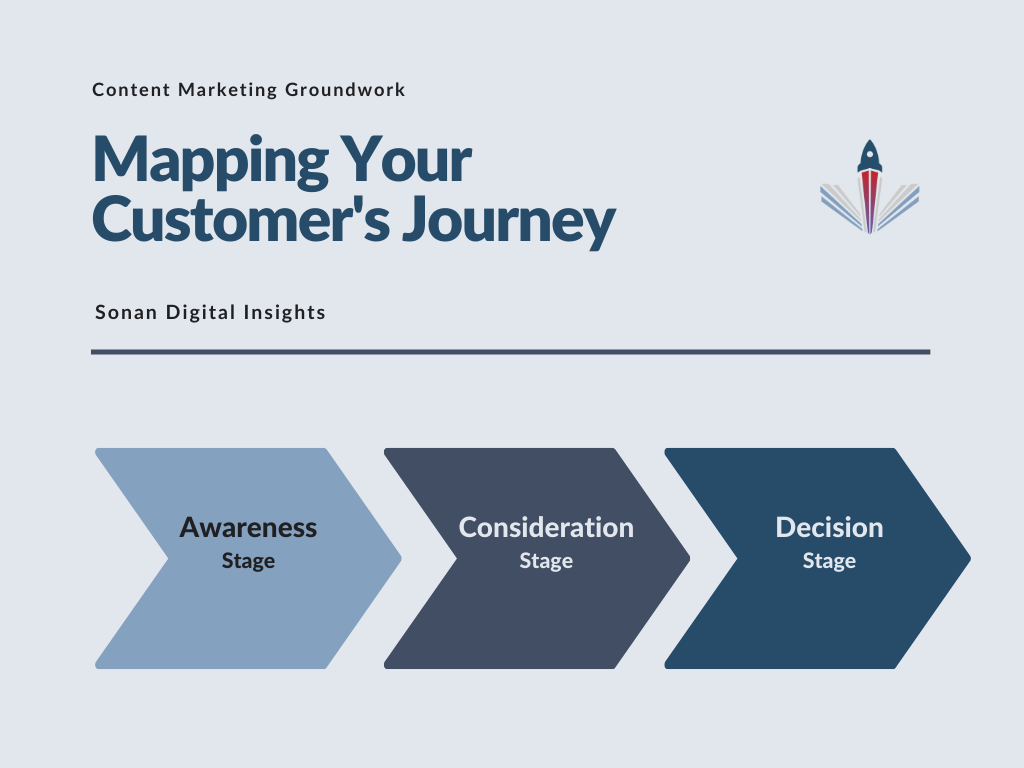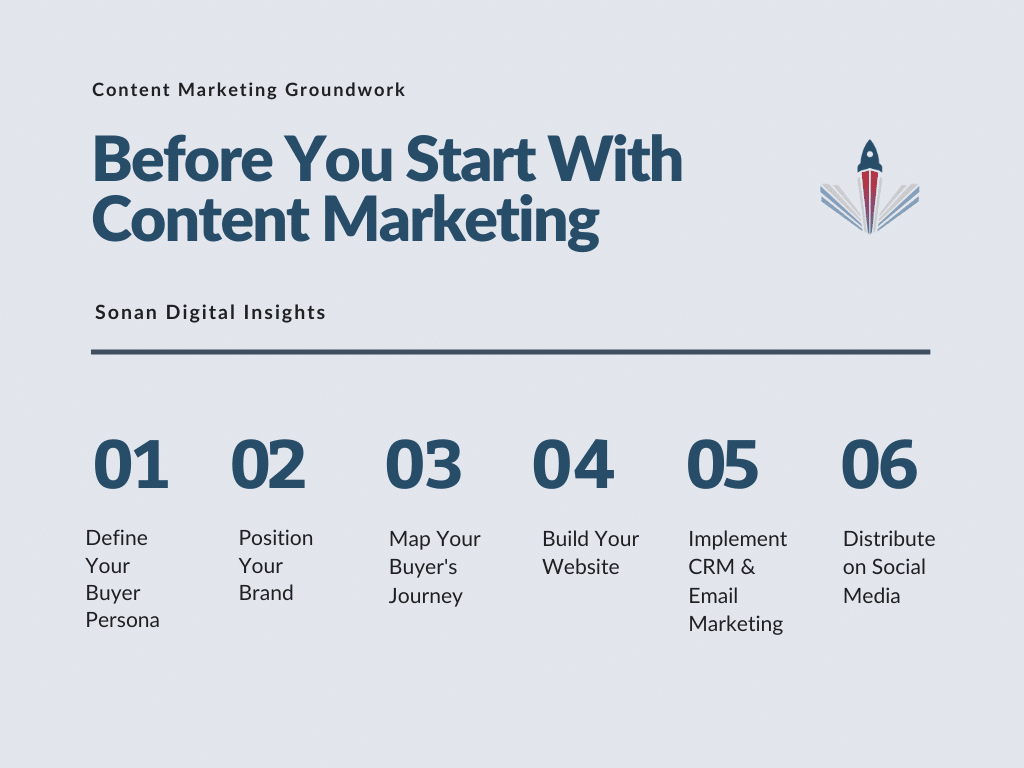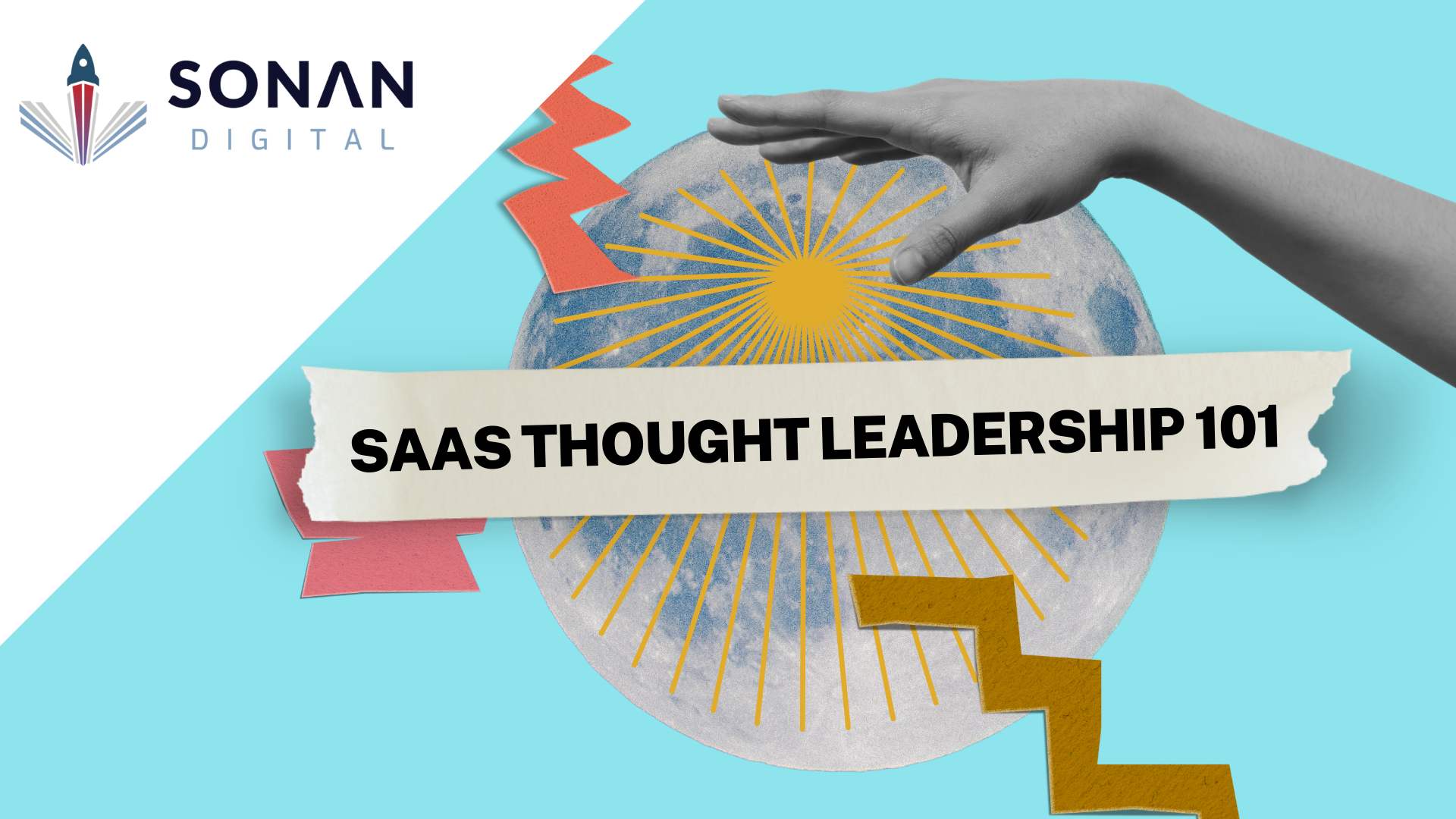Upon deciding to implement a targeted content marketing strategy, there are certain elements that should be in place for success. It is often easy to get consumed by creating content that serves no real purpose. Don’t get caught in the trap of producing content aimlessly. Instead, create a strategy, put in the effort, and build a brand that generates results.
In today’s post, we will be outlining some of the essential components required to create an effective content strategy. This post aims to serve as a guide for some of the fundamental questions you should answer before implementing a content marketing strategy. We encourage a reader to do a deep dive on all of the topics listed here.
Part of The Founder’s Guide to B2B SaaS Content Marketing. Available as a PDF and Video Series.
Targeted Content Marketing – Defining Your Buyers Persona
As with any other form of marketing, you must understand the problem you are trying to solve. In the world of B2B, this can vary widely. Is your product or service for small business owners or enterprise customers? Are you looking to target buyers in a certain industry or geography perhaps? The more you analyze your current customers and establish a strong understanding of who most needs your product—the more effective your marketing will be.
For content marketing, clearly defining your buyer persona will also have a massive impact on your success. Tools such as SparkToro allow you to understand the demographics of users searching for a specific topic. By typing in a term, such as “accounting software” you will be able to see audience demographics, as well as the media sources they engage with. This can be extremely helpful in understanding their interests and the information they are taking in.
In the example of Sonan Digital, we aim to serve the founders and marketing executives of B2B SaaS companies in North America who are looking to implement content marketing.
We encourage you, the content marketing visionary, to take the time to execute this step carefully to see results. Lastly, one helpful resource at this stage is the free Buyer Persona Template from HubSpot.
Your Brand’s Positioning In The Market
Once you understand who you are looking to serve, you must understand how to position yourself in the market. It is easy to simply exist in a segment, but often buyers will not choose you without a compelling reason. Take a good look around. Google your product or service offering. By developing an understanding of what your competitors are doing (or not doing), you can create a positioning strategy.
This is no easy feat, and will often take refinement over time. Ultimately you want to have a compelling answer to the question, “Why would anyone choose us?”. From there, you can begin to communicate what makes your product unique.
Connecting it back to a content marketing strategy, you can begin to develop a plan to target your ideal audience. By understanding who you are trying to draw in, you can begin to produce content that resonates deeply with them.
As a resource for this section, we recommend checking out the book Positioning: The Battle for Your Mind by Ries and Trout. Typically companies have one of three choices, be the best (Lamborghini), be the cheapest (Suzuki), or be different in a very specific and polarizing way (Jeep).
The Stages of Your Buyer’s Journey
In your content creation, it is often advisable to target each piece to a specific part of a buyer’s journey. From targeting someone who is newly aware of their problem, to someone contemplating solutions—the content itself is different. You want to understand your buyer’s journey as much as possible.

Looking at the example of accounting software, as an entrepreneur starts their business, they may be only using spreadsheets and realize they need a better system. They are now problem aware and have entered the awareness stage. Next, they’ll look for solutions and identify potential options, such as hiring a full-time bookkeeper, implementing desktop software, or using web-based software. They have entered the consideration stage and become solution aware. Once they have decided on a handful of web-based software options they will lastly look at how they compare. This is the final decision stage.
You can create content to serve your buyer across the entire journey, even into your sales or support team’s processes. Map out all the potential steps, and understand the questions along the way. Define your buyer’s journey clearly.
A Well Designed and Optimized Website
As you begin to produce content and expose buyers to your brand, it is essential that your website is well developed. It all starts with conveying the right message. This should align with the information you identified in earlier stages. By creating your ideal structure and messaging first, you will allow buyers to understand your brand. Beyond that, by taking the time to design a well-functioning website, you will delight buyers through an attractive visual experience.
For more information on this topic, check out our post on building a website that generates B2B leads effectively.
Furthermore, for the purposes of targeted content marketing, you must ensure that your site is well suited for the type of content you will be producing. If creating written content through blogs, using a CMS such as WordPress to organize posts will be crucial to scaling properly. There are also SEO considerations that must be taken into account, such as ensuring that your website is fast and secure. It must also be easily indexed by the search engines with proper structure. If you are unsure about developing a proper website, we recommend seeking guidance at this stage to ensure you’re set up for success.
An Established CRM & Email Platform
With targeted content marketing, you will often need a way to collect email addresses and nurture leads over time. A CRM and marketing automation platform, such as HubSpot, allows you to do both. By offering content such as ebooks, newsletters, and courses in exchange for email addresses—you can start developing relationships. This is often the way that content can be utilized to generate new leads.
HubSpot is a great choice at this stage, as it will allow you to easily create email collection forms, automated email nurture sequences, and even manage individual relationships with their CRM. While there are many options out there, ensuring that you have a CRM in place is the key to success. Furthermore, by collecting email addresses, you open the door to having direct relationships with your customers, rather than relying on social platforms entirely.
Social Media For Targeted Content Marketing Distribution
Lastly, to distribute the content you produce, you’ll most likely be utilizing social media. Most experts recommend you start with one or two strategic channels to focus your efforts. In the B2B world, LinkedIn is a great choice for many brands. With many engaged business professionals and strong organic reach, getting your message out there is easy. It will often take years to develop a strong audience. By focusing on consistency— results will follow.
For a rundown of the top B2B social media platforms, check out this helpful post that provides further detail on the options available.
Targeted Content Marketing – Conclusion
Congratulations! By laying down this groundwork you’ve set yourself on the road to success. Ironing out all of the details of your desired audience and brand will take time. The process never truly ends. But, by having a clear understanding and strong technical foundation, you can begin to develop your content marketing strategy. We encourage you to read our series on the topic or to download our e-book.
Part of The Founder’s Guide to B2B SaaS Content Marketing. Available as a PDF and Video Series.
-1024x320.png)




